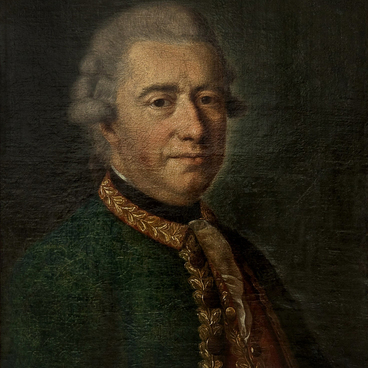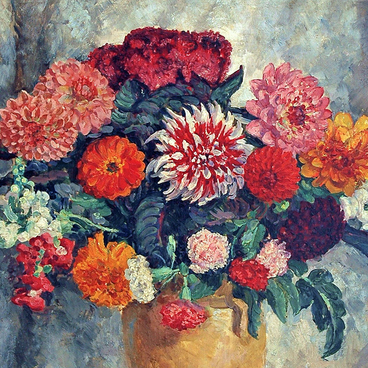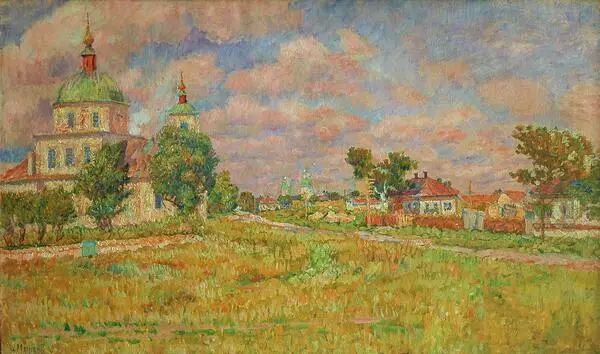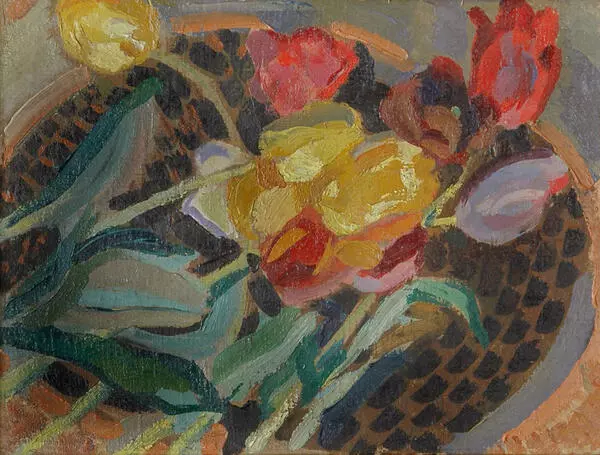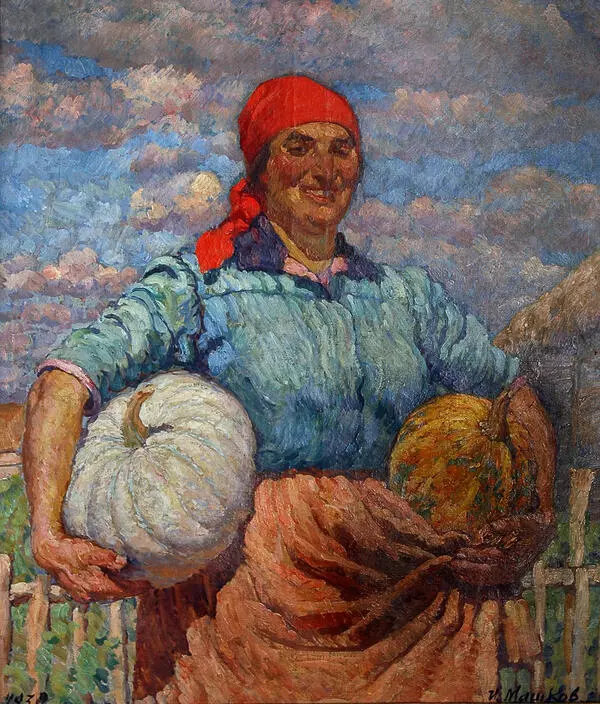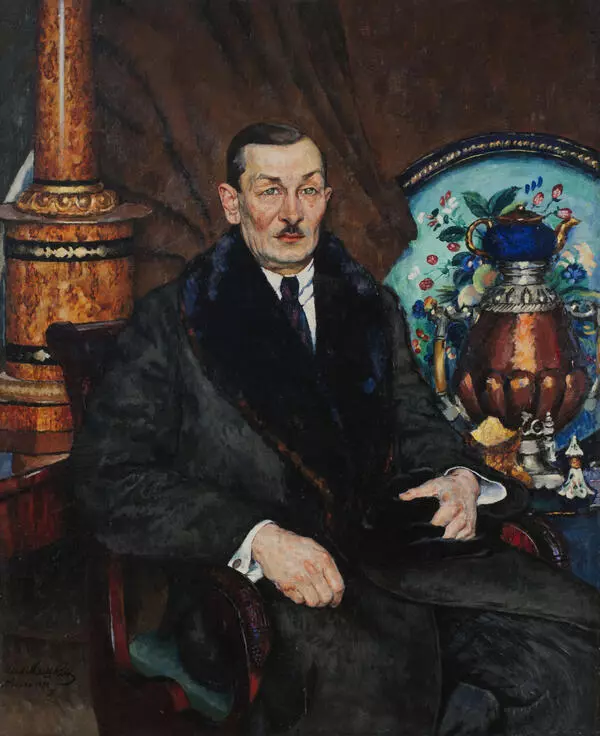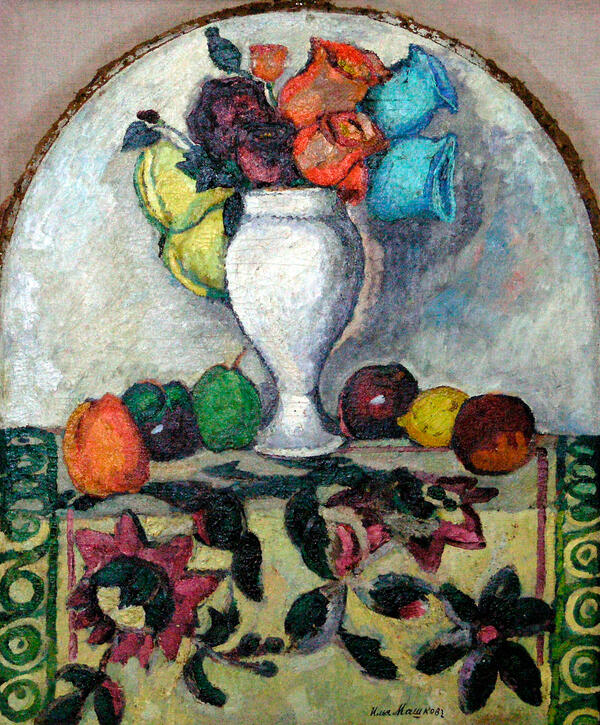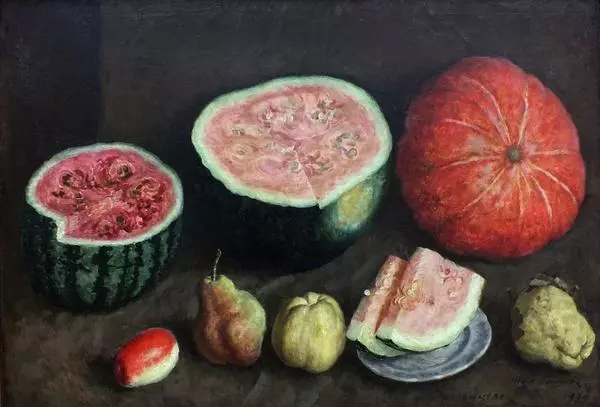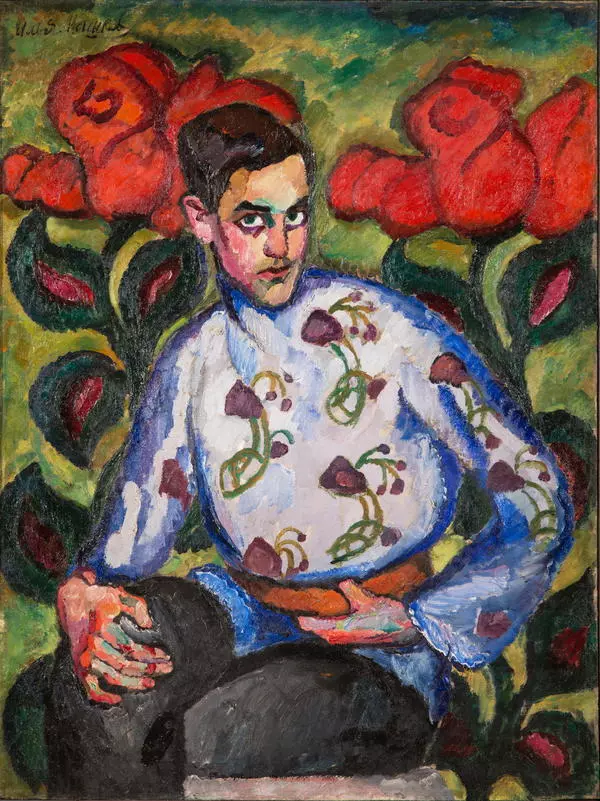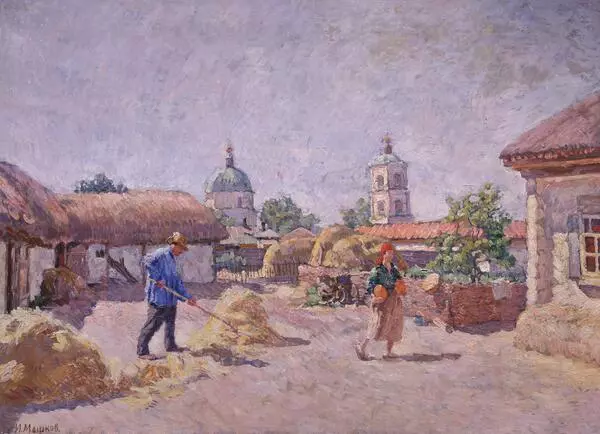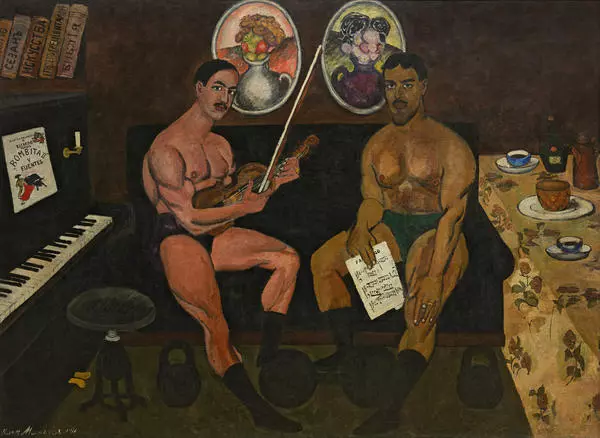In the pre-war years, the artistic style of Ilya Mashkov changed. The paintings in bright colors were replaced by contrasting combinations of red, black, and yellow. At this time, a difficult period began in the life of Mashkov. Despite a huge amount of effort, his carefully designed project of building a ‘city of the future’ in an impoverished village didn’t come to life. In the creative crisis, the artist turned to socially significant topics. The characters of his paintings of this period are static, tense, and severe.
Soviet artists of the 1930s often tried hard to achieve photographic accuracy in portraits. During that period, it was also important for Mashkov to record and convey the model’s appearance features, the texture of fabrics, the shape of objects, and the color shades.
From 1932 to 1935, Mashkov painted a series of dark pictures full of light-shadow and color contrasts. There were several portraits, including the painting ‘Pioneer with the Horn, ” presented in the exhibition of the Volgograd Museum. It is a pair work for the portrait “Pioneer with the Domra” from the collection of the Taganrog Art Museum.
Mashkov created both paintings in the village of Mikhailovskaya, in the building of the school of collective farm youth. The horn and the domra, held by the characters of both pictures, were purchased by the artist for the House of Socialist Culture. Young Antonina Kryukova, a local resident, posed for the “Pioneer with the Horn.” Mashkov rarely depicted children in his paintings, which distinguishes these portraits from his other creations.
The first pioneer detachments appeared in May 1922. The decision to create them was made by the All-Union Conference of the Komsomol with the participation of Nadezhda Krupskaya, the wife of Vladimir Lenin. One of the ideologists of Scouting, the sculptor Innokenty Zhukov, proposed the motto “Be ready!” for the new organization. The Central Committee of the Komsomol headed the pioneer organization.
In the 1930s, military defense work took place in the pioneer collectives, circles of young shooters, orderlies and signalmen appeared, and military sports games were held. In 1991, the pioneer organization, as well as the Komsomol, ended its existence. At first, there were different attempts to reform it, but it was not possible to recreate the children’s and youth organizations on the same scale.
Soviet artists of the 1930s often tried hard to achieve photographic accuracy in portraits. During that period, it was also important for Mashkov to record and convey the model’s appearance features, the texture of fabrics, the shape of objects, and the color shades.
From 1932 to 1935, Mashkov painted a series of dark pictures full of light-shadow and color contrasts. There were several portraits, including the painting ‘Pioneer with the Horn, ” presented in the exhibition of the Volgograd Museum. It is a pair work for the portrait “Pioneer with the Domra” from the collection of the Taganrog Art Museum.
Mashkov created both paintings in the village of Mikhailovskaya, in the building of the school of collective farm youth. The horn and the domra, held by the characters of both pictures, were purchased by the artist for the House of Socialist Culture. Young Antonina Kryukova, a local resident, posed for the “Pioneer with the Horn.” Mashkov rarely depicted children in his paintings, which distinguishes these portraits from his other creations.
The first pioneer detachments appeared in May 1922. The decision to create them was made by the All-Union Conference of the Komsomol with the participation of Nadezhda Krupskaya, the wife of Vladimir Lenin. One of the ideologists of Scouting, the sculptor Innokenty Zhukov, proposed the motto “Be ready!” for the new organization. The Central Committee of the Komsomol headed the pioneer organization.
In the 1930s, military defense work took place in the pioneer collectives, circles of young shooters, orderlies and signalmen appeared, and military sports games were held. In 1991, the pioneer organization, as well as the Komsomol, ended its existence. At first, there were different attempts to reform it, but it was not possible to recreate the children’s and youth organizations on the same scale.



